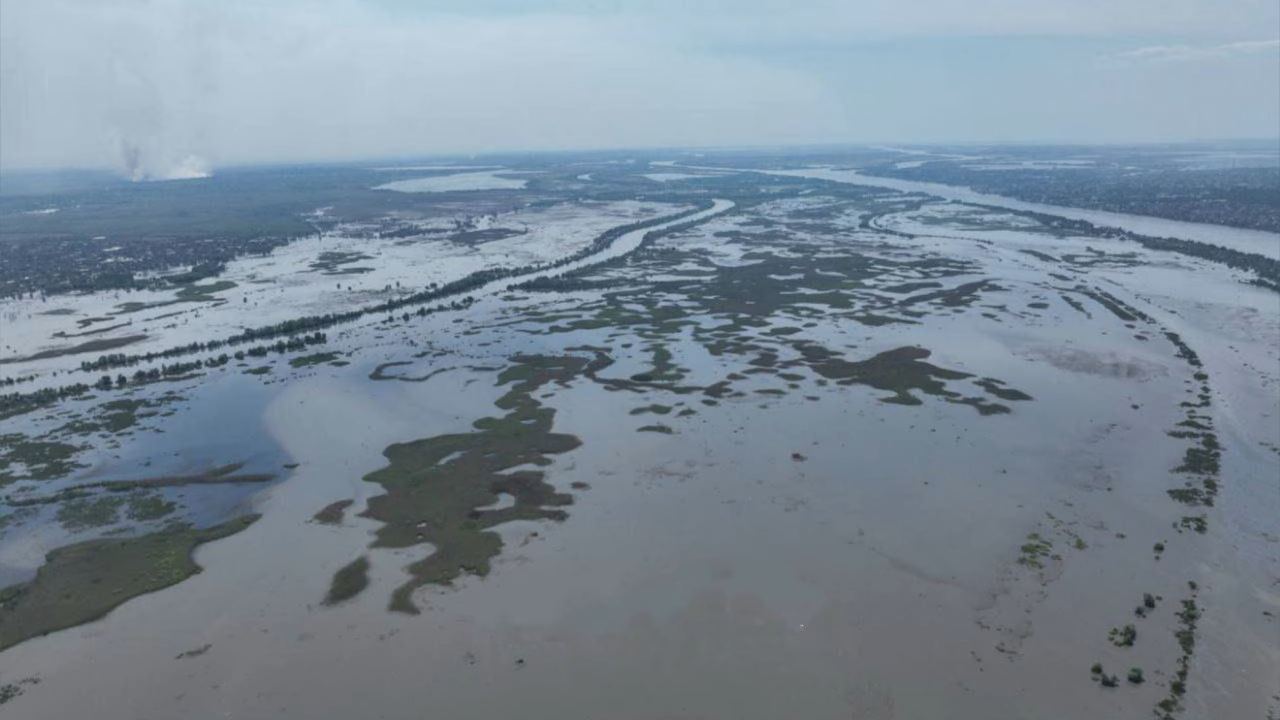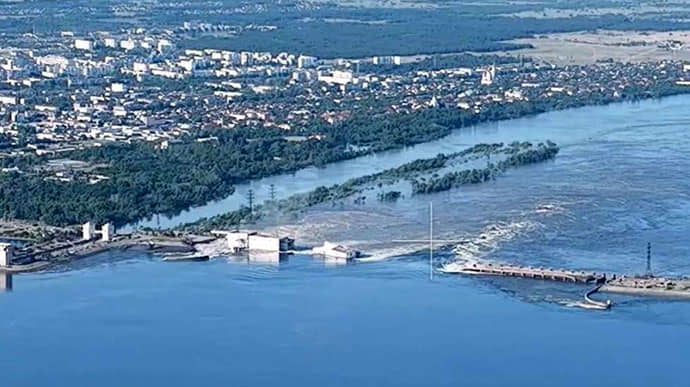The evidence suggests that an explosive charge detonated in a passageway under the Kakhovka dam's concrete block and destroyed the dam, according to the New York Times (NYT).
Referring to engineers from Ukraine and the United States, the NYT claimed that Russian forces, which controlled the Kakhovka hydroelectric power plant before its destruction, planted explosives deep inside the dam.
"Deep inside the dam was an 'Achilles' heel. And because the dam was built during Soviet times, Moscow had every page of the engineering drawings and knew where it was," according to the NYT's investigation.
There was a solid concrete block at the dam's base with a small passageway running through it, reachable from the dam's machine room. According to the NYT, an explosive charge detonated in this passageway, causing the Kakhovka dam destruction.
"As the water levels further dropped this week, they fell below the top of the concrete foundation. The section that collapsed was not visible above the water line — strong evidence that the foundation had suffered structural damage," engineers told the NYT.
Given the satellite and seismic detections of explosions in the area, the most likely cause of the dam destruction was an explosive charge placed in the maintenance passageway, or gallery, that runs through the concrete core of the dam's structure, according to two American engineers, an expert in explosives and a Ukrainian engineer, the NYT reported.
“If your objective is to destroy the dam itself, a large explosion would be required,” Michael W. West, a geotechnical engineer and expert in dam safety and failure analysis, told the NYT. “The gallery [the maintenance passageway -ed.] is an ideal place to put that explosive charge.”
Ihor Strelets, a Ukrainian engineer who served as the deputy head of water resources for the Dnipro River from 2005 until 2018, told the NYT that an explosion in the maintenance passageway most likely destroyed the dam. Strelets said the Kakhovka dam's foundation was designed to withstand "almost any kind of external attack."
The evidence "clearly suggests" the dam was destroyed by an explosion set off by the side controlling the Kakhovka hydroelectric power plant, namely Russia, the NYT concluded.
Earwitnesses recall hearing explosions on night when Nova Kakhovka dam collapsed
The Kahovka hydroelectric power plant in southern Ukraine experienced significant destruction on 6 June, causing widespread flooding, mass evacuation of civilians, military setbacks, and raising disputes regarding the future implications.
According to Ukrainian Intelligence, the detonation of the dam happened at 2:30 am on 6 June. Russia carried out primary mining operations immediately after seizing Kakhovka hydroelectric power plant back in February-March 2022. In April 2022, Russia carried out additional mining of the locks and supports and placed trucks with explosives on the dam itself, according to Ukraine’s Intelligence.
Norway’s nuclear test-ban monitor, the Norwegian Seismic Array (NORSAR), analyzed seismic signals from regional stations concerning the Kakhovka dam collapse in southern Ukraine and concluded that there was an explosion at the Kakhovka dam on Tuesday night (6 June 2023).
According to NORSAR, seismic signals indicate an explosion at the Kakhovka dam at 02:54 am on 6 June. The magnitude estimate is between 1 and 2, which means that the kinetic action was highly likely used to destroy the dam.
Related:
- Russian troops blow up Kakhovka dam, unleashing environmental disaster
- Russians blew up Kakhovka Dam using explosives planted there last fall - Danilov
- Seismic signals indicate Kakhovka dam explosion - NORSAR
- Russian sabotage group blew up Kakhovka dam; it didn't go as planned, SBU intercept alleges
- Kakhovka dam flood: volunteers continue rescue mission, Russian occupation authorities steal their boats, aid
- Kakhovka dam breach: Hundreds drown as Russia prevents evacuation
- Russia controlled Kakhovka Dam and bears responsibility for its destruction - White House





